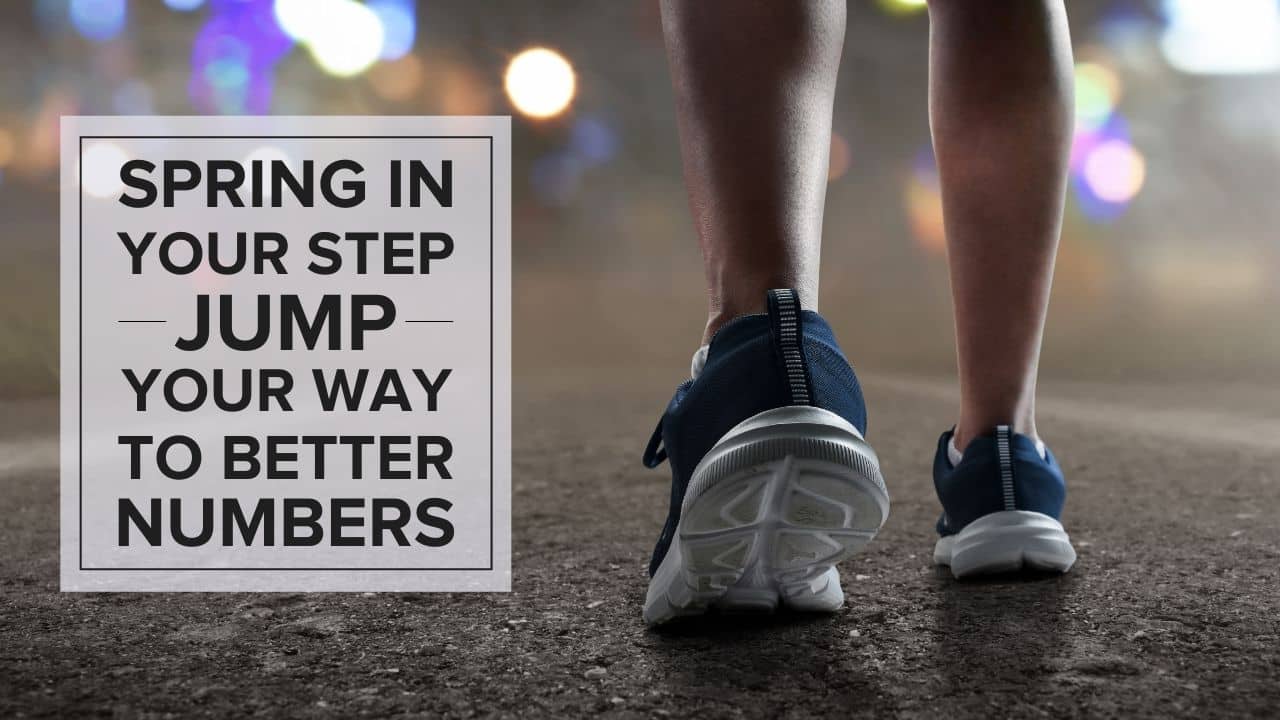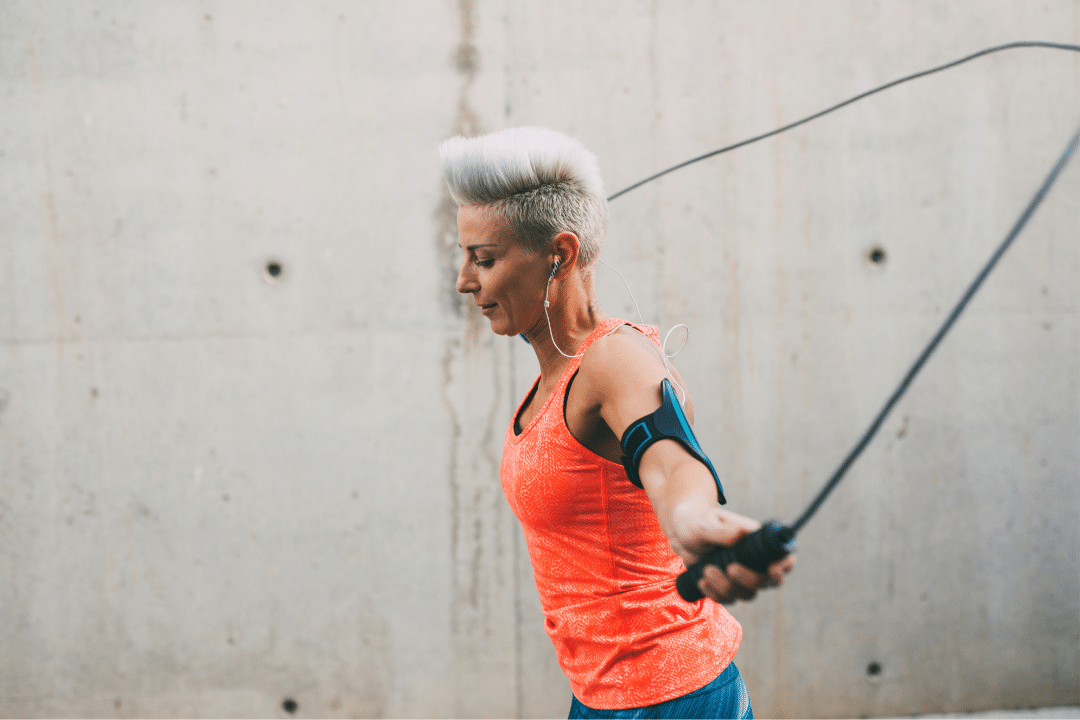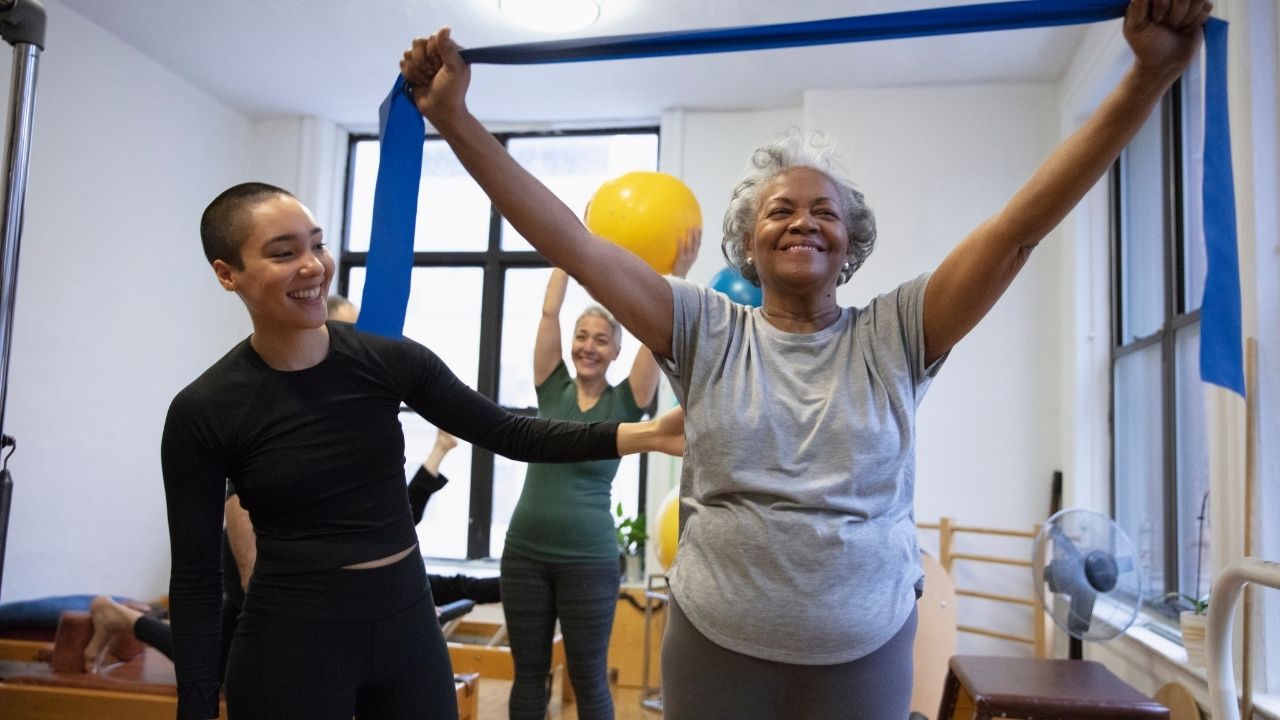
The research is overwhelmingly clear – regular physical activity is valuable for everyone, and can have health benefits ranging from weight loss to increased energy, to better mood to lower risk of chronic disease. And while we may all understand the importance of daily exercise, putting it into practice can seem daunting.
Which activity should you start with? How long should you workout for? Do you need expensive equipment? In this blog post, we’ll explore the benefits of daily exercise as well as a short, fun activity that can provide big results and costs only a few bucks to get started.
Daily Movement Plays a Large Part in Improving Your Health

There are countless studies and an abundance of research to show the importance of daily movement. According to the Mayo Clinic, regular physical activity can increase longevity, boost your mood, and benefit your overall health. Exercise delivers oxygen and nutrients to your muscle and helps your cardiovascular system work more efficiently, reducing your risk for chronic disease. And, when your heart and lung health improve, you have more energy to tackle your daily tasks.
Exercise Helps You Manage and Reverse Diabetes
While daily exercise is beneficial for everyone, according to experts like the American Diabetes Association it can be even more valuable to people with prediabetes, type 1 diabetes, type 2 diabetes, or any other form of diabetes.
This is because regular physical activity has been proven to help increase the rate at which you burn energy and reduce insulin resistance, which are crucial to reversing type 2 diabetes and making sure that you can easily manage your blood glucose if you’re living with type 1 diabetes.
In fact, experts put exercise as one of the fundamental steps to improving your diabetes health!
Small Changes Add Up to Big Changes
The good news is even small changes in your daily activity can make a big difference! For example, people who sit less and get even small amounts of moderate or vigorous physical activity gain some health benefits.
When you are starting to implement those changes, there are two major things that people with diabetes can do to make sure that they’re prepared for exercise:
Have a plan, and set attainable goals! This helps you make sure that you’re not overexerting yourself too quickly, and it makes it much easier to stick to your new routine!. Working with your diabetes care provider or a personal trainer can help you design an exercise routine that works for you and your body, and can help you scale up to low, medium, and even high-intensity exercises. (We’ll touch on some examples of these exercises in the next section.)
Make sure that you have glucose tablets or some fun healthy snacks nearby. Any time you push yourself while exercising, it’s possible that you’ll start to have low blood glucose. This is all part of the process of improving your overall health, and can easily be combated by having healthy snacks or glucose tablets available.
An Easy Workout to Burn a Lot of Calories Quickly

Jumping rope is an easy way to burn a high amount of calories in just a short period of time. Yes, we said jumping rope! A childhood favorite has become an effective tool in helping you lose weight, reverse insulin resistance, improve your fitness, and boost your overall health.
And, while it shouldn’t be the only activity you do, it is a good one to add to your daily routine. Remember, the key to improving your diabetes health is a combination of many factors, which include eating a nutrient-dense, minimally processed diet, exercising regularly, getting enough sleep, and managing your stress levels.
Jumping Rope has Several Unique Benefits for Your Entire Body
You Burn Calories Quickly
According to Healthline, a 200-pound (91-kg) person can burn an impressive 362 calories from 20 minutes of jumping rope quickly, or 241 calories when jumping rope slowly. Quite a good return for an easy activity!
The Impact of Jumping Rope Can Be Very Healthy!
Jumping rope is good for your bones: Research has shown that exercises involving jumping can increase bone-mineral density in premenopausal and postmenopausal women, which can reduce the risk for osteoporosis. But at the same time, jumping rope actually provides less of a harsh impact on your knees and ankles than running might. As a reminder, you should always check with your medical provider before embarking on a new exercise routine, especially if you have any injuries or ailments which might make jumping rope potentially risky.
It’s a Full Body Workout
Not only do you use your shoulders and biceps and torso, but according to the American Council on Exercise, jumping rope is particularly beneficial for strengthening the calf muscles and improving elasticity of the surrounding tendons and fascia, which in turn decreases your risk of lower leg injuries. Plus full body exercises are excellent to help you stay healthy throughout your life.
Jumping Rope Improves Balance and Agility
Although you might start slowly, your skill will improve with practice. And, the coordination you will gain is important. The ability to move your arms and legs in different ways stimulates the brain while also improving your agility. Agility is listed as one of the most important factors to quality of life as you age.
Getting Started Jumping Rope

Find the Right Rope
Jump ropes are readily available online or at your local general hardware, toy, or fitness store, most costing less than $20. While there are many options available, we suggest one with free spinning handles and an adjustable length.
From there, as a general rule of thumb for sizing, when you stand on your jump rope and pull it taut, the handles should come up to your armpits. You can double check this by holding the rope taut overhead and making sure the handles easily reach your sides without hanging too low. The weight of the rope should also be substantial enough so that you feel it when it goes over your head and under your feet.
Wear the Correct Shoes
Lightweight athletic shoes are most conducive to jumping. You will want a strong foot support to help cushion your landings in between jumps. Stability is key to your success jumping rope.
Find a Flat, Level Surface with Plenty of Room
Jumping rope requires more space than you might think. The radius of the swinging rope will need adequate space, while your feet will need a level, flat surface. Try to avoid grassy areas that might be unlevel, and if you find cement or asphalt to be too hard, you might find a carpeted area or even invest in a small mat. Fortunately though, finding a space to jump rope is probably easier than you think.
Easy Routines to Get You Jumping
Beginner Routine
2-Minute Footstep Rope
If you have never jumped rope, hold each end of the rope in either hand, and then swing the rope overhead and simply step over the rope. At this point you are not jumping, but simply stepping over to become familiar with the rope. Do this several times to get the swinging into a regular cadence.
30-Second Alternate Footstep Jump Rope
Once you feel comfortable, jump from one foot to the other over the rope as you swing. Now you are jumping, and you should try to alternate the feet as the rope swings toward you. Ideally you try to establish a regular cadence.
Intermediate Routine
30-Second Basic Bounce
Once you are comfortable with the alternate footstep jumping, you can move on to the basic bounce. Keeping your knees, hips, and ankles soft, with elbows in to the ribs and hands slightly in front of hips, use your wrists to swing the rope over your head and bounce lightly up and down on the balls of your feet, jumping only high enough (just an inch or so) to clear the rope.
Try to jump for just 30-seconds at a time to begin with, taking a break to catch your breath as needed until you build up your cardio. You can then start to build up the amount of time you jump for.
Advanced Exercise Routine
There are countless ways to advance your jumping rope, from fancy arm swings, leg crosses, and speed. We suggest you start by increasing your time to up to two minutes at a time. Jumping rope is best if used as part of interval training, meaning you pair it with another exercise such as walking, running, or even cycling and you alternate between the exercises for your workout.
It should be noted that although jump rope tends to be very healthy for your bones and joints, it is still considered a high impact exercise, which might not be appropriate for everyone. As mentioned above, check with a doctor if you have any injuries or ailments which might make jumping rope potentially risky. But even if so, there are other forms of exercise, like cycling or swimming, that are excellent forms of exercise.
Jumping Your Way to Better Diabetes Health

So what’s the final word? Well, we know exercise is good for you, especially if living with diabetes, but we also know it's challenging. That’s why we recommend starting with making some small additions to your day, like jumping rope.
After all, the science is clear – regular exercise can help you toward your goal of reversing type 2 diabetes or making sure that you can more effectively manage your blood glucose if you’re living with type 1 diabetes
We’ve briefly touched on some of the steps to get started here, and if you want to learn more about the importance of daily movement, as well as how other small lifestyle changes can make a big difference, there are lots of places you can start.
You might read the New York Times Bestselling book Mastering Diabetes, or explore our website for articles on exercise, as well as our guides on intermittent fasting and nutritional guidelines. Together, they form the three best chances of improving your health quickly.
If you’re looking for someone to guide you on your journey, you can get all the steps in our DIY program, or work with an expert diabetes coach through small-group coaching or one-on-one training. Thousands of people have had results and love it - and you can get those results too. In fact, we guarantee it if you work with us!
And finally, the Mastering Diabetes Community is always here to provide nutritional, informational encouragement and guidance for daily exercise - plus social support to help you meet your new goals.
So, what are you waiting for? It’s time to start making some new daily habits that will boost your health, and make you feel great along the way. It’s time to Master Diabetes.

